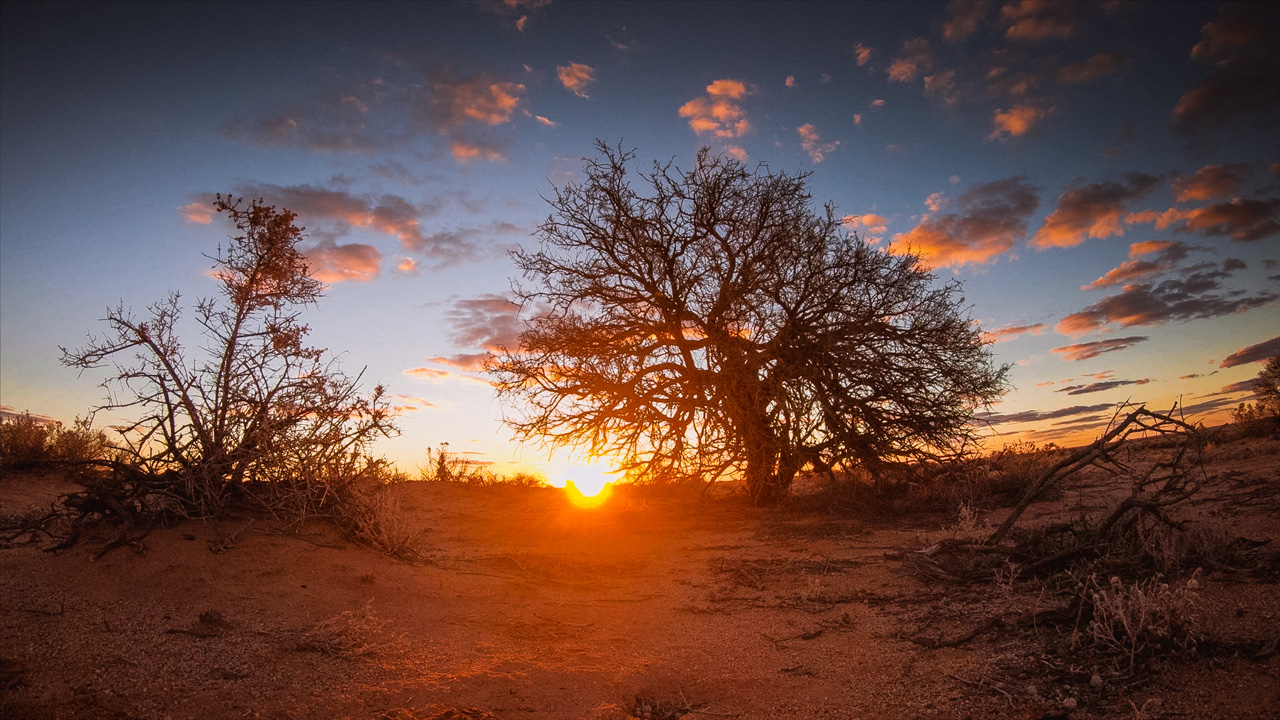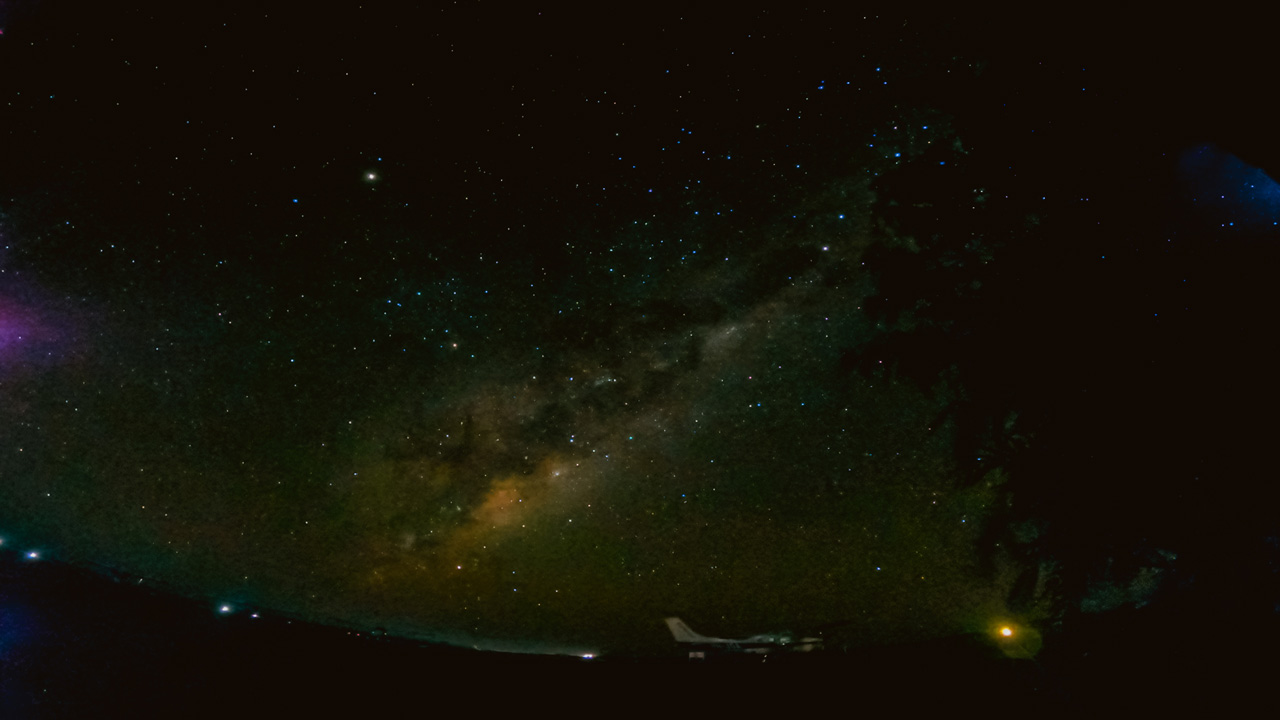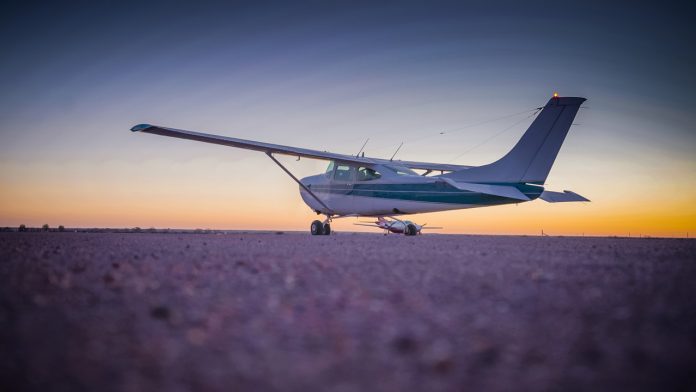Close call by Simon Bromiley
I was an occasional jump pilot for a small skydiving operation in Western Australia. It was one of those perfect spots where the skies were always blue and the views from altitude were fabulous. The 182 I was flying was an older model and a bit skydiver tatty. Normal procedure was to fly with an inch of fuel in each tank and leave the selector to ‘both’, putting a bit more in for each sortie. Being a bit cautious I usually erred on the side of safety and flew with two inches (5 cm) each side.
The last load of the day was a tandem to 12,000 feet and the solo descent was beautiful as dusk was setting in. As I taxied back to the hanger a group of four fun jumpers ran out kitted up ready and eager—not unusual—sunset jumps are fabulous. This was my first mistake. I opened the door and they climbed in. I knew I had enough fuel and I thought yep, just time for a 10,000 footer before sunset, but I didn’t really consider the local conditions including cloud and moon.
The strip was desert dirt scraped out of the rocks and spinifex, oriented north/south between two rows of hills, about 400 feet high. There was a rail depot nearby and high voltage transmission cables at each end. It presented challenges at the best of times.
As we climbed through 3000 feet I started to get a bit edgy. So did the jump master. A quick change of plan and I turned into wind over the strip at 5000 feet and opened the door. Five seconds later they were gone, and I was on my own—normally a wonderful feeling.
 I made my usual powered descent to keep the horses hot but spiralling down over the top I realised I couldn’t actually see the strip. I could see where it should be but by now everything was in dark shadow and the lower I got the darker it got. By the time I was downwind it was totally dark. Mistake number two—I turned on every light I could find. It made me feel better I suppose but ruined my night vision.
I made my usual powered descent to keep the horses hot but spiralling down over the top I realised I couldn’t actually see the strip. I could see where it should be but by now everything was in dark shadow and the lower I got the darker it got. By the time I was downwind it was totally dark. Mistake number two—I turned on every light I could find. It made me feel better I suppose but ruined my night vision.
So now I was downwind for a dirt strip I couldn’t see, in hilly terrain, with power cables all over the place, in the dark. Oops! I made an approach to where I thought the strip was, not below 500 feet with landing lights on. I could make out a shadow and I could see lights on the club house, but I wasn’t sure. I turned around and had another look from the other direction. I went through the options in my mind. Could I land on a road? No, not without being sure about power cables. Could I make it to the local airport with lighting? Ten miles over water on minimal fuel? No way. I tried lining up on the rail yard signals, knowing the strip was just to the right. Couldn’t see a thing and I knew my fuel was now minimal.
 Fortunately, the jump master was an older bloke. On my fourth pass I saw a ute with headlights on racing up to where I guessed the strip should be. He reversed into the perimeter fence with headlights full on and I knew I was saved. The old bush pilot’s trick of landing over the farm ute worked a treat. I greased it on, taxied up to the hanger and as if nothing unusual had happened, joined the boys for a beer.
Fortunately, the jump master was an older bloke. On my fourth pass I saw a ute with headlights on racing up to where I guessed the strip should be. He reversed into the perimeter fence with headlights full on and I knew I was saved. The old bush pilot’s trick of landing over the farm ute worked a treat. I greased it on, taxied up to the hanger and as if nothing unusual had happened, joined the boys for a beer.
What did I learn from that? Don’t let non-pilots influence your decision to fly. Better for the jumpers to be disappointed than an aircraft wreckage or worse. Remember it is always dark on the ground sooner than in the air. Don’t ruin your night vision, no amount of lights will bring the sun back. Calculate a time to be on the ground and don’t let anything change your mind.



Who’s ultimately responsible for the flight???????????? That was a very dumb thing to do, you where very lucky!
Walter. That is very judgmental. I wrote this to share with you my mistakes. I hope you will do the same because for sure if you don’t make mistakes you don’t learn anything. Good luck.
Very informative. I agree that non-pilots can try to influence decisions. It’s extremely dangerous to fall for it, more especially in marginal conditions. I learnt my lesson.
Thanks for sharing Simon. We all need to own up as pilots to bad judgment calls or mistakes and talk about it. This is a valuable learning resource for all pilots.
Thanks for sharing Simon, most of us appreciate learning from others wherever possible, and we could not do that if you didn’t share. Frankly it takes guts to go into print to admit things could have been done better, and you have my admiration for that.
And on the flip side, it takes no guts at all to criticise those who have been willing to help the rest of us learn from their experience. I direct this comment to those who believe they are so perfect that they have the right to criticise others. It is painfully obvious that certain individuals are repeat offenders!
Thanks Simon for taking the trouble to contribute this. By fessing up to such things you enable us all to learn by other people’s mistakes. There is no way that individually we can make all the possible “learning mistakes” ourselves and survive! You may have just saved someone’s life (maybe mine!). I’m also glad for you that I didn’t read about this scenario in an accident report. (and I also trust the ute driver didn’t have to buy himself any beers that night!)
yes ..name calling is not helpful … Thanks Simon for sharing this potentially fatal incident. We can learn a lot from near miss incidents One day I might even own up to a few of my own flying peccadilloes .
Thanks for sharing this valuable lesson Simon. We all make mistakes where luck plays a big part in our survival. I wonder if the club’s fuel reserve policy became subject to “normalized deviance”.
New Minimum fuel requirements are now mandatory so the next one to do this hopefully will have more options (about 30 minutes more )
Thanks for sharing Simon, as pilots and humans we all make mistakes and I learn from my own and others. So to those that wish to judge then perhaps they are just arm chair pilots with no experience of flying and how things can go wrong at times. Good on you for sharing :) Happy flying .